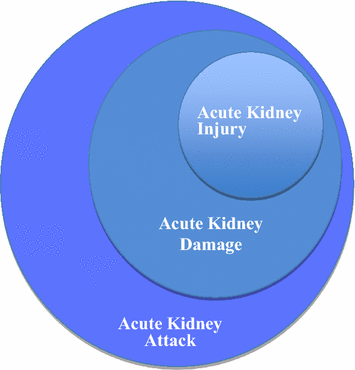Acute kidney injury in the perioperative period and in intensive care units (excluding renal replacement therapies)
- PMID: 27230984
- PMCID: PMC4882312
- DOI: 10.1186/s13613-016-0145-5
Acute kidney injury in the perioperative period and in intensive care units (excluding renal replacement therapies)
Abstract
Acute kidney injury (AKI) is a syndrome that has progressed a great deal over the last 20 years. The decrease in urine output and the increase in classical renal biomarkers, such as blood urea nitrogen and serum creatinine, have largely been used as surrogate markers for decreased glomerular filtration rate (GFR), which defines AKI. However, using such markers of GFR as criteria for diagnosing AKI has several limits including the difficult diagnosis of non-organic AKI, also called "functional renal insufficiency" or "pre-renal insufficiency". This situation is characterized by an oliguria and an increase in creatininemia as a consequence of a reduction in renal blood flow related to systemic haemodynamic abnormalities. In this situation, "renal insufficiency" seems rather inappropriate as kidney function is not impaired. On the contrary, the kidney delivers an appropriate response aiming to recover optimal systemic physiological haemodynamic conditions. Considering the kidney as insufficient is erroneous because this suggests that it does not work correctly, whereas the opposite is occurring, because the kidney is healthy even in a threatening situation. With current definitions of AKI, normalization of volaemia is needed before defining AKI in order to avoid this pitfall.
Figures
References
-
- The Kidney Disease Improving Global Outcomes (KDIGO) Working Group KDIGO clinical practice guideline for acute kidney injury. Kidney Int Suppl. 2012;2:1–138. doi: 10.1038/kisup.2012.1. - DOI
-
- Bellomo R, Ronco C, Kellum JA, Mehta RL, Palevsky P. Acute renal failure—definition, outcome measures, animal models, fluid therapy and information technology needs: the second international consensus conference of the Acute Dialysis Quality Initiative (ADQI) Group. Crit Care. 2004;8:R204–R212. doi: 10.1186/cc2872. - DOI - PMC - PubMed
Publication types
LinkOut - more resources
Full Text Sources
Other Literature Sources
Medical


